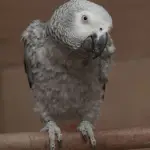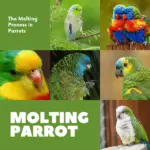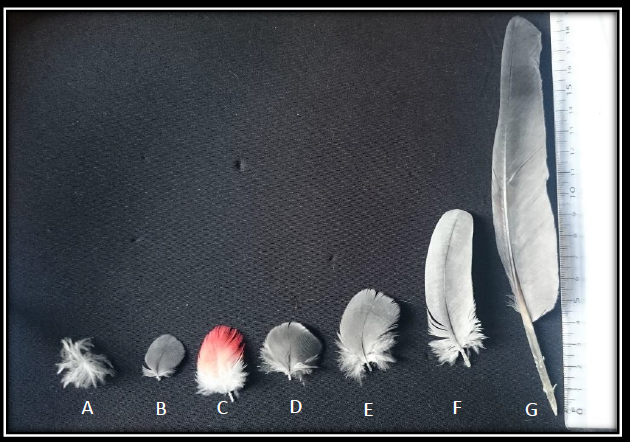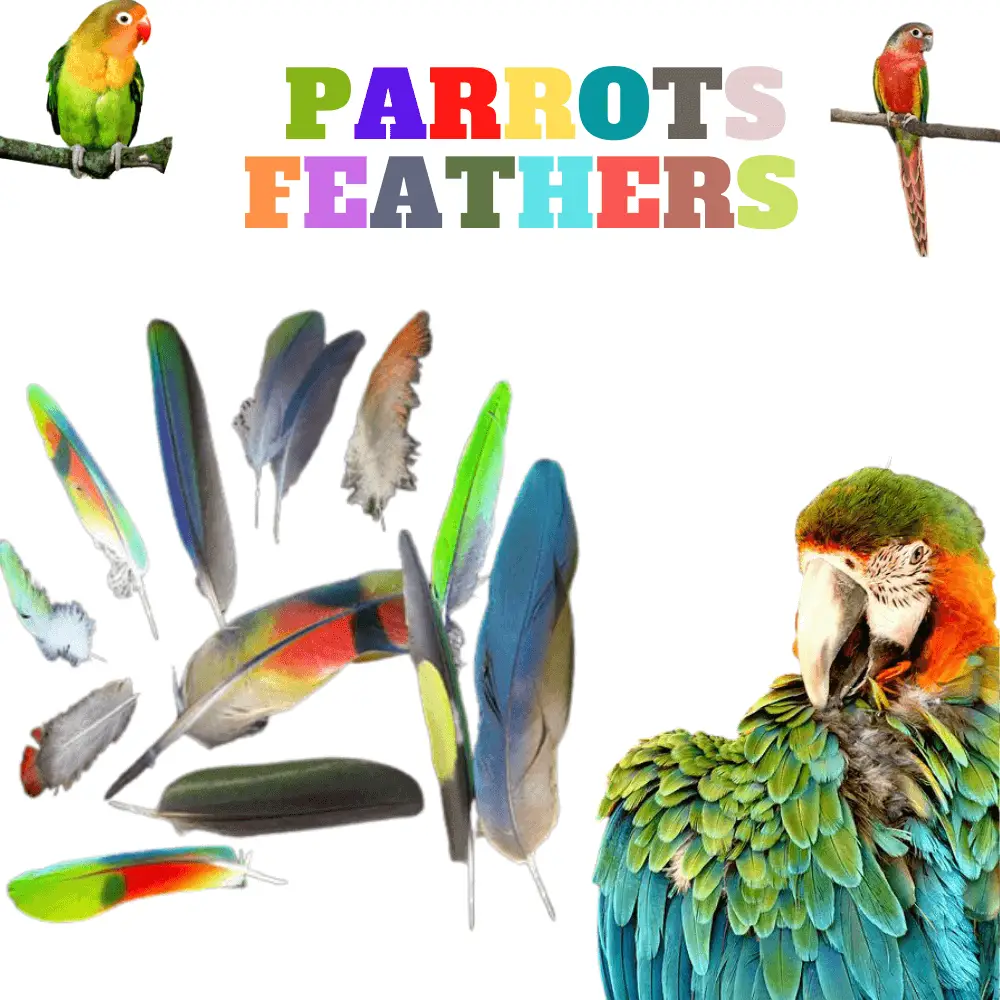
Parrots feathers: To better examine the plumage, it is necessary above all to know how the feathers are formed and how they are organized.
All follicles of feathers are formed during embryogenesis and are preserved throughout life if the skin tissue is preserved. The proliferation of basal epithelial cells of the follicle forms the germ of the pen.
Cell division is more rapid on the cranial side of the latter, the pen grows caudally and the cranial face of the seed becomes the dorsal face of the future pen.
At the same time, cellular differentiation takes place at the level of the invagination of the epidermis and forms a cylindrical tube around the feather which will remain present until the end of the growth thereof.
Finally, in the center of the feather is formed a cylindrical pulp having a structure close to that of the dermis and having an artery in its axis. It regresses as the pen grows, leaving in its path hoods that will gradually disintegrate.
Parrots feather plant
Parrots feathers
The feather, therefore, consists of a pulp (internal) and an epidermis (external) which progressively differentiates into rachis, hyporachis, barbs, and barbules thus forming the structure of the new feather
The calamus is the part of the feather on which no beard fits. It is in continuity with the rachis (opposite dorsal) and the hyporachis (ventral face) on which the barbs are inserted. The umbilicus is the junction between the calamus and rachis. These form the shaft of the pen that gives it its strength and rigidity
The barbs fit on the rachis and divide on both sides into proximal and distal barbules. The latter is equipped with hooks that hook on the proximal barbules of the next beard, thus conferring its strength to the pen: the barbules being fixed to each other, the barbs are held together and the pen can be s’ press the air like a sail
Parrot tail feathers
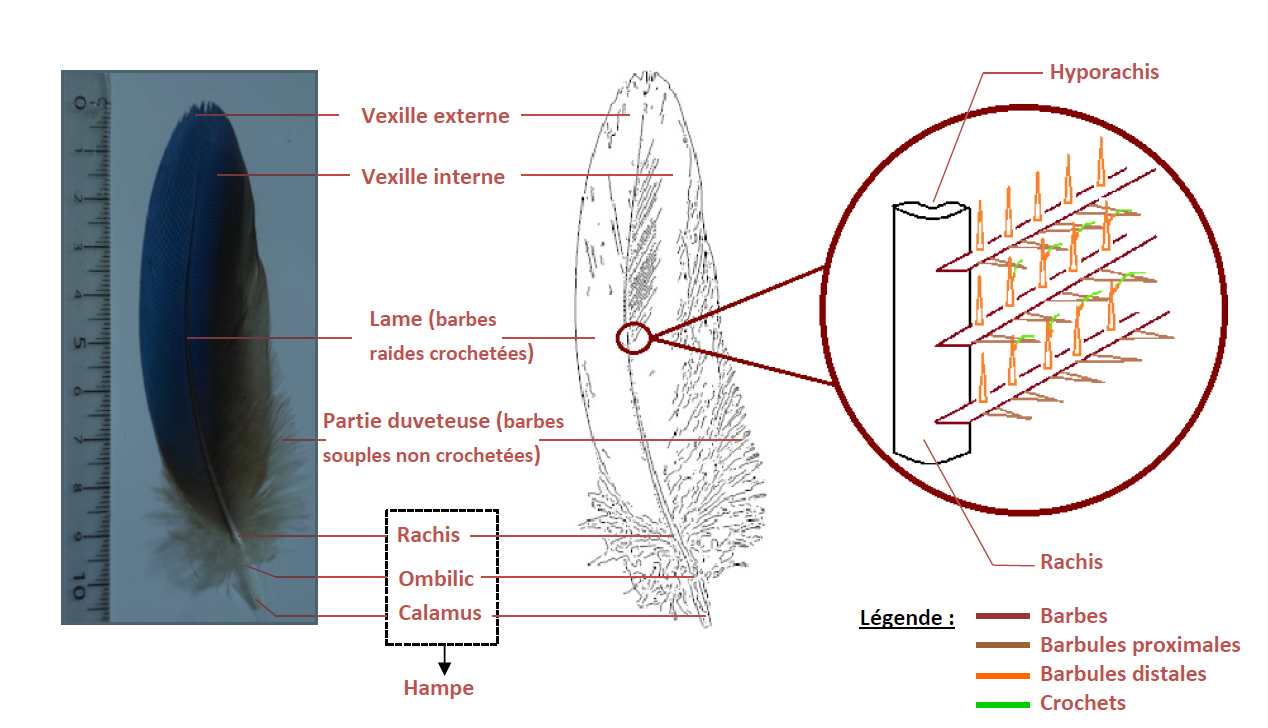 The plumages of parrots
The plumages of parrots
There are different types of feathers spread over the body of the bird:
- Filiplumes: Having long rachis with some barbs at their distal end, they look like hairs. They are spread over the whole body of the bird.
- Vibrissae: They have a very long spine without barbs except at the proximal end. They can also look like hairs and are usually found on the face of the bird, especially around the nostrils.
- Sectors: Small, completely downy (no hooked barbules), and with very short rachis, they are evenly distributed on the body of the parrot. Some of these feathers are specialized in the formation of keratinized powder (or feather dust) by disintegrating. The dust falls and covers the plumage, giving it its smooth appearance and impermeability.
- Semiplumes or plumules: They are almost completely downy and have a rather long spine. They are mainly in the abdomen and on the legs of the bird.
- Covers: These are small feathers located mainly at the wings and tail and sometimes around the ears. They consist of hooked and downy beards.
- Penne: These are the largest feathers of the bird and they are divided into two categories:
- Remiges: Located at the wings, they are very long and have asymmetrical vices. They have no fluffy part and it is on them that the bird leans in flight. There are primary, secondary, and tertiary reminds
- Rectrices: It is the long feathers of the tail that can be particularly long in certain species of Psittacidae (Ara’s sp. The downy part is also absent and the vices are slightly asymmetrical. They participate in changes of direction in flight.
- Contour feathers: These are the most numerous. They cover the body of the bird by positioning themselves above the covers and plumules. They have hooked (distal end) and non-hooked barbs. Their shape and size vary according to their location on the body of the bird
Presentation of different feathers of an African Grey Parrot
What Feathers Tell You About Your Parrot’s Health
A tector (A), four contour feathers (B: and, C: around the cloaca, DO: thorax, E: abdomen), a large blanket (F), and a feather (G)
At the level of the wings, the feathers are distributed according to the presented below:
All About Your Parrots plumage

The plumages of parrots
The plumage is, therefore, a complex organ, both by its establishment and by its organization. Nevertheless, even if the detail is not decisive during a clinical examination, the practitioner must understand its operation and disposition.
When examining the plumage of the bird, the veterinarian should pay attention to cleanliness, pigmentation of feathers, lesions or malformations, abnormally feather-free areas, or the presence of parasites.
The absence of feathers in unusual areas may be due to self-mutilation or pecking (the practitioner may observe remains of cut feathers), an attack by a congener (broken feathers also sometimes accompanied by skin lesions), parasitism, or still a malformation during the shoot (the veterinarian can then notice structural abnormalities on the young feathers in the shoot)
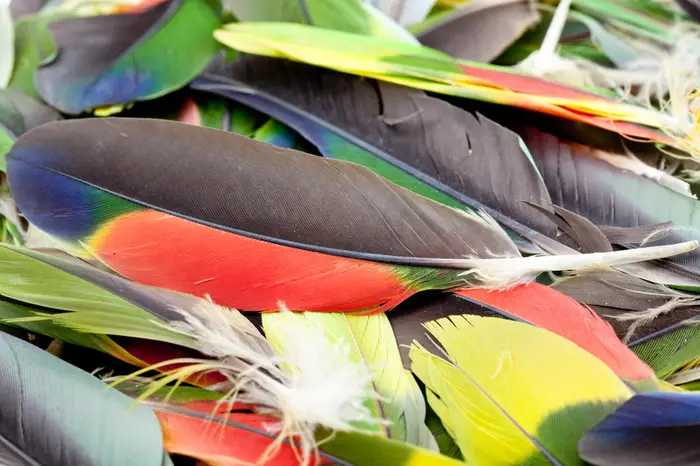
Parrots feathers
Ever done this with your parrots feathers
SOURCE:MARLENE MC’COHEN

